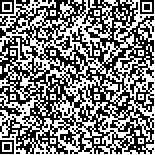| 引用本文: | 毛勇,应奇素,史长城,李晴宇,严伟.熊果酸调控TGF-β1/Smads信号通路对肾纤维化的干预作用[J].中国现代应用药学,2021,38(24):3149-3154. |
| MAO Yong,YING Qisu,SHI Changcheng,LI Qingyu,YAN Wei.intervention effect of ursolic acid on renal fibrosis by regulating TGF-β1/Smads signaling pathway[J].Chin J Mod Appl Pharm(中国现代应用药学),2021,38(24):3149-3154. |
|
| 本文已被:浏览 1179次 下载 458次 |

码上扫一扫! |
|
|
| 熊果酸调控TGF-β1/Smads信号通路对肾纤维化的干预作用 |
|
毛勇1,2, 应奇素3, 史长城1,2, 李晴宇1,2, 严伟1,2
|
|
1.浙江大学医学院附属杭州市第一人民医院药学部, 杭州 310006;2.浙江省临床肿瘤药理与毒理学研究重点实验室, 杭州 310006;3.杭州市老年病医院(杭州市第一人民医院城北院区)肾内科, 杭州 310022
|
|
| 摘要: |
| 目的 观察熊果酸对单侧输尿管梗阻(unilateral ureteral obstruction,UUO)小鼠肾纤维化和肾小管上皮-间质转分化(epithelial-mesenchymal transdifferentiation,EMT)的影响,探索TGF-β1/Smads信号通路在其中的作用机制。方法 将50只ICR♂小鼠随机分为5组:假手术组,模型组,熊果酸低、中、高剂量组,每组10只。通过单侧输尿管结扎手术造小鼠肾纤维化模型,术后连续灌胃不同剂量的熊果酸7 d。给药结束后留取小鼠血清,测定小鼠血清生化指标(肌酐和尿素氮);处死小鼠留取左侧梗阻肾组织标本,病理切片染色(HE和Masson染色)观察肾组织纤维化程度,采用免疫组化染色和Western blotting测定各组小鼠肾组织中EMT标志蛋白(E-cadherin和α-SMA)、TGF-β1、p-Smad2/3的表达。结果 与模型组相比,不同剂量熊果酸组小鼠血清肌酐及尿素氮水平呈现显著降低趋势;胶原沉积程度显著减轻,炎性细胞浸润程度显著改善;E-cadherin表达水平显著升高、α-SMA表达水平显著下降、TGF-β1和p-Smad2/3表达水平显著降低。结论 熊果酸减轻肾脏纤维化和EMT程度,其保护作用机制可能与熊果酸抑制TGF-β1/Smads信号通路有关。 |
| 关键词: 熊果酸 肾纤维化 上皮-间质转分化 TGF-β1/Smads |
| DOI:10.13748/j.cnki.issn1007-7693.2021.24.016 |
| 分类号:R285.5 |
| 基金项目:浙江省自然科学基金/浙江省药学会联合基金(LYY19H310008) |
|
| intervention effect of ursolic acid on renal fibrosis by regulating TGF-β1/Smads signaling pathway |
|
MAO Yong1,2, YING Qisu3, SHI Changcheng1,2, LI Qingyu1,2, YAN Wei1,2
|
|
1.Department of Pharmacy, Hangzhou First People's Hospital, Zhejiang University School of Medicine, Hangzhou 310006, China;2.Zhejiang Provincial Key Laboratory of Clinical Oncology Pharmacology and Toxicology, Hangzhou 310006, China;3.Department of Nephrology, Hangzhou Geriatric Hospital (Chengbei Branch of Hangzhou First People's Hospital), Hangzhou 310022, China
|
| Abstract: |
| OBJECTIVE To observe the effect of ursolic acid on renal fibrosis and renal tubular epithelial-mesenchymal transdifferentiation(EMT) in mice induced by unilateral ureteral obstruction(UUO), and to explore the role of TGF-β1/Smads signaling pathway. METHODS Fifty ICR male mice were randomly divided into 5 groups:sham operation group, model group, low-dose, medium-dose and high-dose ursolic acid groups, 10 in each group. The mouse kidney fibrosis model was created by unilateral ureteral ligation, and continuous intragastric administrated with different doses of ursolic acid for 7 d after operation. After the administration, the mouse serums were collected to determine the biochemical indicators(creatinine and urea nitrogen). The mice were sacrificed and left obstructed kidney tissue specimens were collected. Pathological staining (HE and Masson staining) was performed to observe the degree of renal tissue fibrosis. Immunohistochemical staining and Western blotting were used to determine expression of the EMT marker protein(E-cadherin and α-SMA), TGF-β1 and p-Smad2/3. RESULTS Compared with model group, in different dose of ursolic acid groups, the creatinine and urea nitrogen levels significantly decreased, the collagen deposition was significantly reduced, the degree of inflammatory cell infiltration was significantly improved, the expression level of E-cadherin increased significantly, α-SMA decreased significantly, TGF-β1 and p-Smad2/3 expression levels were significantly reduced. CONCLUSION Ursolic acid can reduce renal fibrosis and renal tubular EMT. Its protective effect mechanism may be related to the inhibition of TGF-β1/Smads signaling pathway. |
| Key words: ursolic acid renal fibrosis epithelial-mesenchymal transdifferentiation TGF-β1/Smads |
